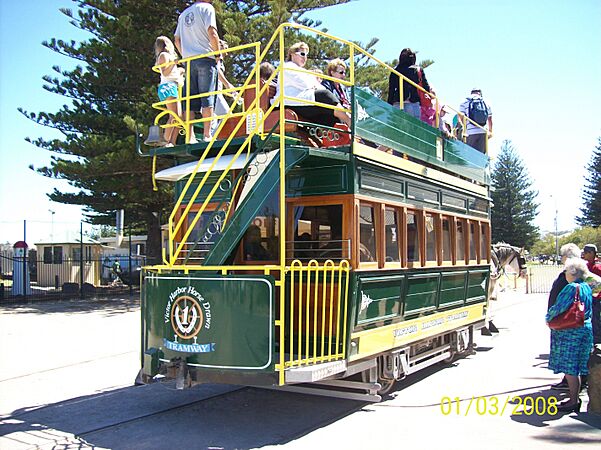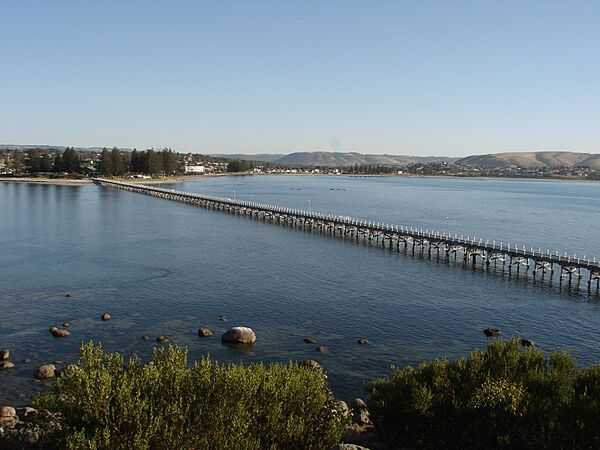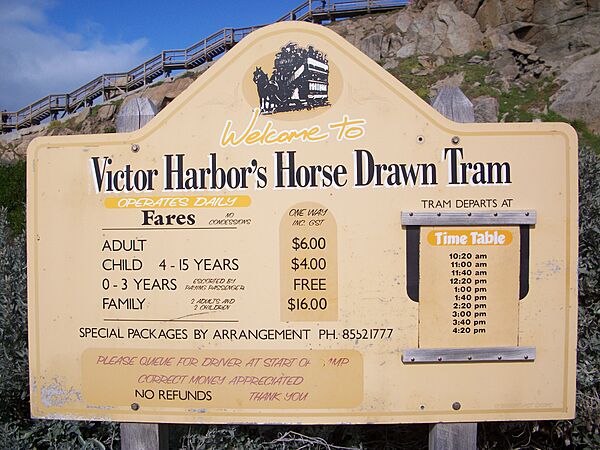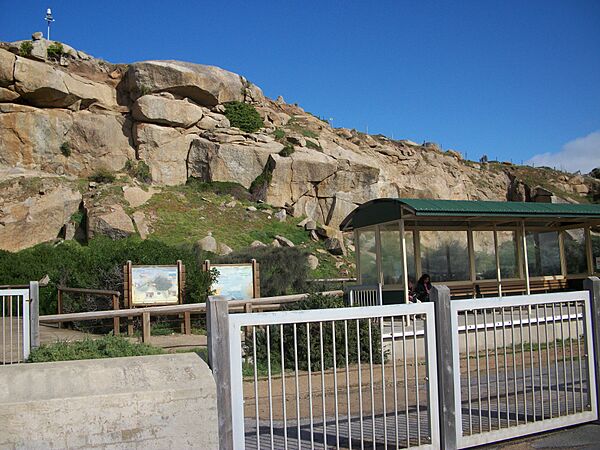Victor Harbor Horse Drawn Tram facts for kids
The Victor Harbor Horse Drawn Tram is a special tram service found in Victor Harbor, a city in South Australia, Australia. This unique tramway stretches for about 3.1 kilometers (about 1.9 miles). It connects the city's visitor center to the nearby Granite Island. A big part of its journey, about 630 meters (2,067 feet), goes over a long bridge called a causeway.
This tramway is one of the very few places in the world where you can still ride a tram pulled by horses! It runs every day of the year, except for Christmas Day. Up to three double-decker trams are pulled by strong Clydesdale horses. The tracks are built to a "broad gauge" of 5 feet 3 inches (1.6 meters). This was a common track width for many early railways in South Australia.
In October 2018, a special group called the Victor Harbor Horse Tram Authority was created. It's part of the City of Victor Harbor and helps manage, grow, and promote the tram service.
Contents
The Tram's Journey Through Time
How the Tramway Began
The railway first reached Victor Harbor in 1864. At that time, a pier (a long structure built out into the water) was built next to the railway station. In 1867, this pier was made even longer to reach Granite Island. This new connection became known as the causeway. A railway track was laid on it, continuing onto the island and around its northern edge to another jetty.
At first, horses pulled goods wagons on this track. But there was no passenger service until 1894. By then, more and more visitors were coming to Victor Harbor. The causeway itself became a popular spot! So, the South Australian Railways decided to use a spare double-deck tram pulled by horses to offer rides to people. Other trams soon joined in.
Changes and Challenges Over the Years
From the early 1900s, a man named George Honeyman was in charge of running the passenger service. His younger brother, Frank, took over in 1940. The tram service continued until 1955. At that time, the old jetty and parts of the Victoria Pier were being taken down.
To make the causeway strong enough for the tram would have cost a lot of money, about £3,000 back then. The money wasn't available. So, in 1954, the causeway was rebuilt without the tram tracks. The tram service kept running only on Granite Island itself until 1956, when the tram cars were sold.
Between 1956 and 1986, a different kind of service was offered. It used two trailers with rubber tires, pulled by a small tractor. Later, a Land Rover (a type of car) that looked like a steam train pulled them. These trailers could carry half as many people as the old trams.
The Tram's Return and Modern Operations
In 1986, South Australia celebrated its 150th birthday. A special fund was set up for projects to mark this big event. Bringing back the horse tramway was one of these projects!
Four new tram cars were built to look like the old ones. They were made with strong steel, wood, and special roller bearings. The tracks were laid again, and the tram service officially started running once more on June 14, 1986.
In the 1990s, rubber mats were put down on the causeway. These mats help the horses walk more easily. There are 14 horses in total. Each horse works two three-hour shifts per week, doing about 3-4 trips. Usually, one tram operates at a time. During busy periods and at Easter, two trams run. Over the Christmas and New Year holidays, three trams might be in service.
In 2019, the tram service had to stop for a while. On New Year's Day, a part of the causeway broke off and fell into the sea. After engineers checked it, they were worried the old causeway might not be strong enough for the trams. So, tram operations stopped again on January 23. Luckily, the Horse Tram started running again on June 23, 2019, after repairs were made.
Images for kids






